One of the most troubling things about Hurricane Katrina was the government's recovery plan -- or lack thereof.
Latoya Lewis, an organizer and employee at the New Orleans Workers’ Center for Racial Justice, says she was a firsthand witness to the racial inequalities of the government’s response after Hurricane Katrina -- despite former President George W. Bush's statement at the time declaring that “the storm didn’t discriminate and neither will the recovery effort."
“I think Katrina was… one of the most modern times where this country showed us how they feel about black people and people of color,” Lewis told HuffPost Live host Marc Lamont Hill.
Lewis was a high school senior when the storm hit 10 years ago. She recalled sitting with her dog and waiting for the storm to pass -- this was before the levies broke. Lewis thought she would be returning to school the next day with her friends that night she went to bed. Instead, she woke up to two feet of water outside her door. Unlike many others located in the southern parts of the city, Lewis’ family were able to get out of New Orleans in time.
“People were leaving their homes and really walking into danger because there was nothing provided for us,” she said. "Or if they did stay in their homes, they had to go up on the roof to get some air so yea, you didn’t have to check the color of people’s skin to airlift people off the roof because the majority of people left to die here were black people."
Watch the full HuffPost Live segment on rebuilding New Orleans and race in America here.
Sign up here for Live Today, HuffPost Live’s morning email that will let you know the newsmakers, celebrities and politicians joining us that day and give you the best clips from the day before.
Also on HuffPost:
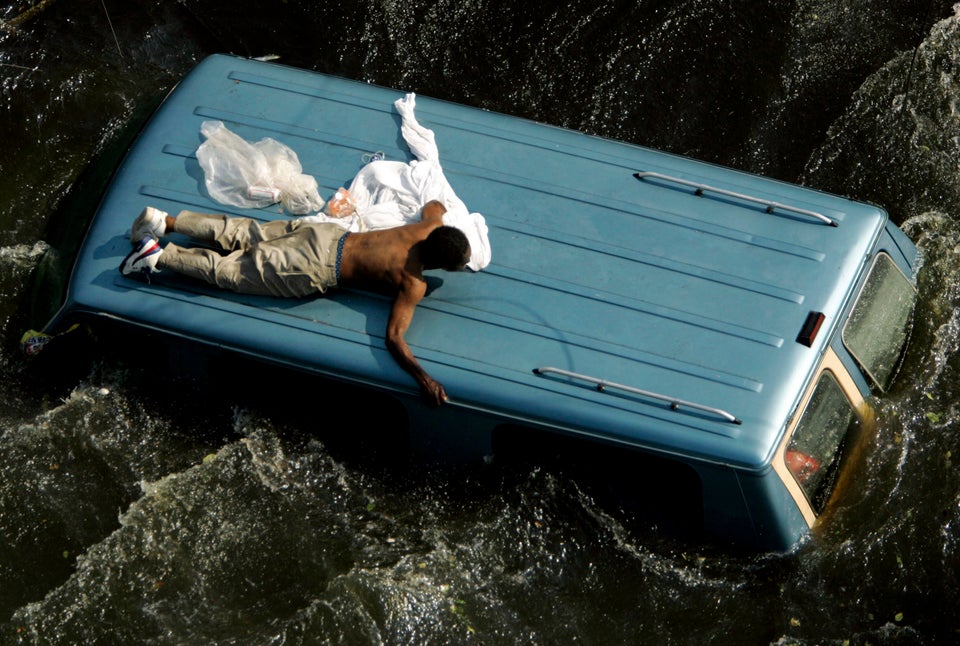
A man clings to the top of a vehicle before being rescued by the U.S. Coast Guard from the flooded streets of New Orleans in the aftermath of Hurricane Katrina, Sept. 4, 2005.
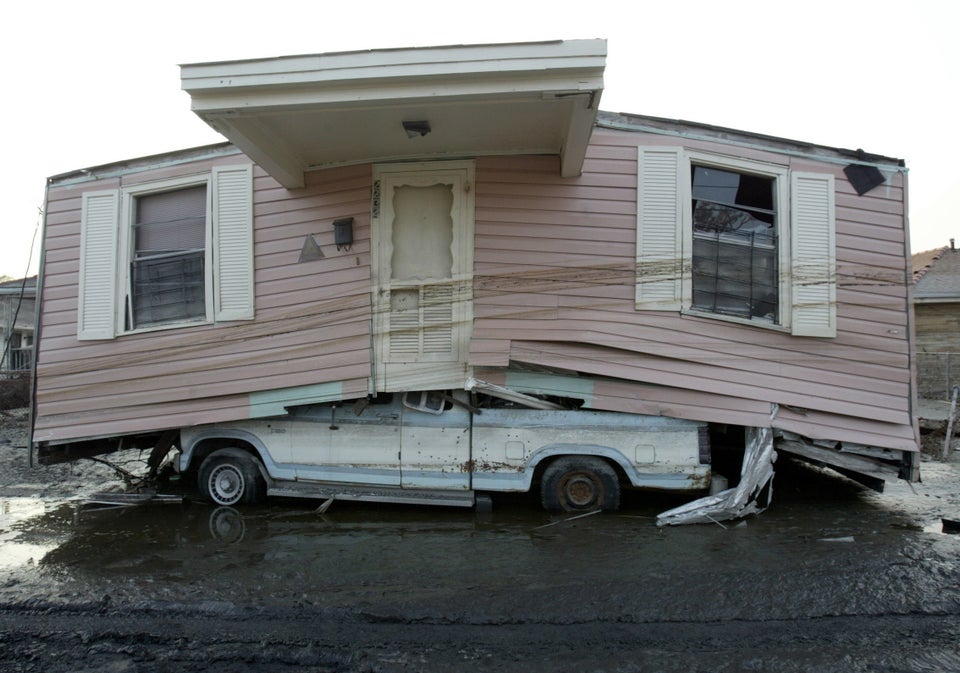
A house swept off its foundation by rushing waters from a levy breach several blocks away sits atop a truck in the Lower 9th Ward neighborhood of New Orleans, Sept. 19, 2005.
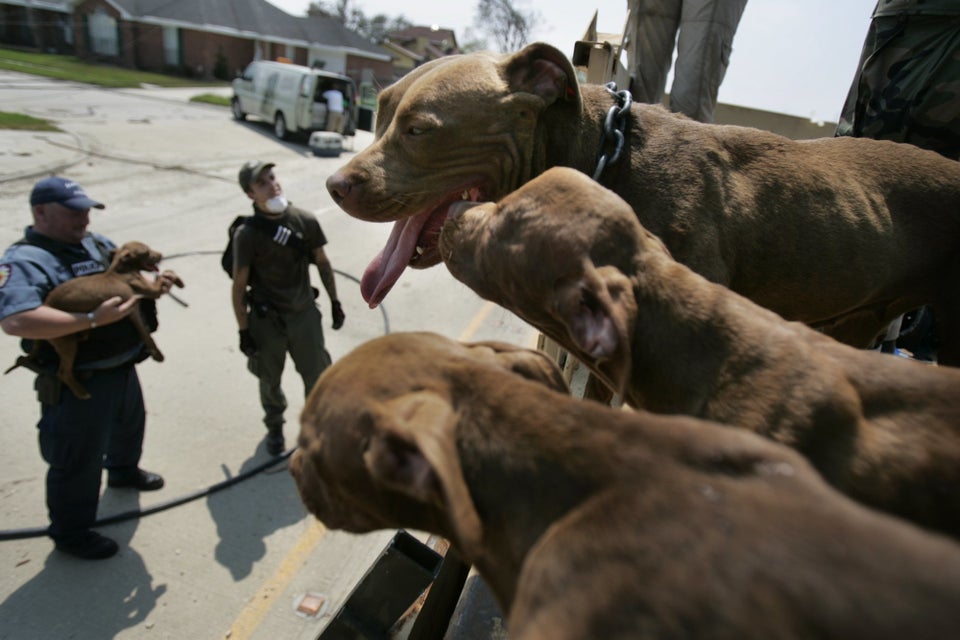
Seven pit bull dogs that had survived in a cage in a New Orleans neighborhood and were rescued by New Orleans police officers accompanied by New York volunteers are turned over to the U.S. Society for the Prevention of Cruelty to Animals, Saturday, Sept. 10, 2005.
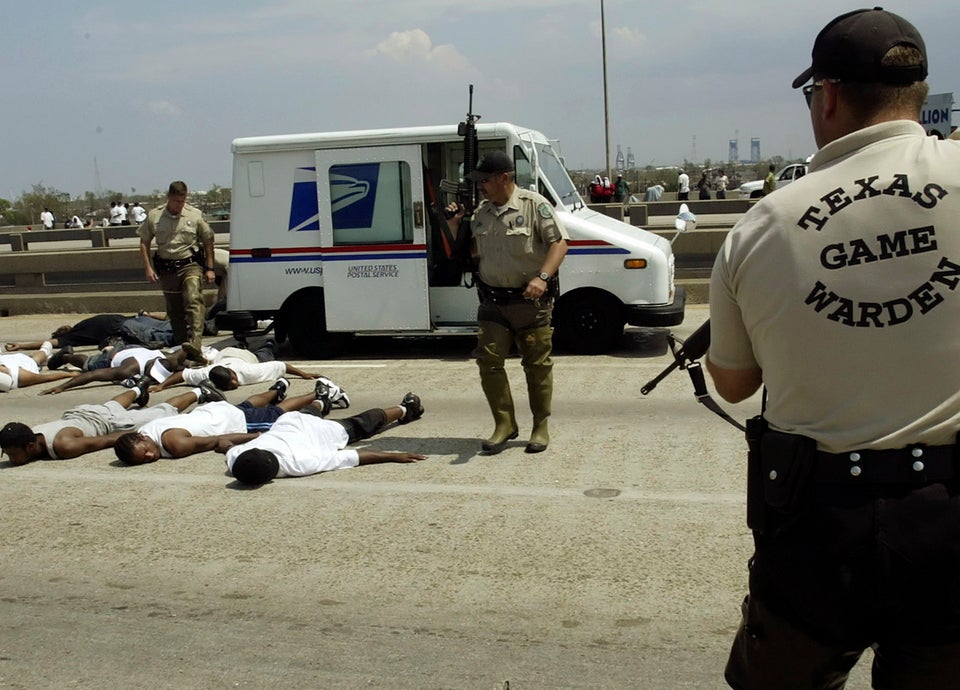
Armed Texas game wardens surround a group of individuals who stole a mail truck to escape the flooded areas of New Orleans East, Aug. 31, 2005. The people were freed but had to continue on foot.
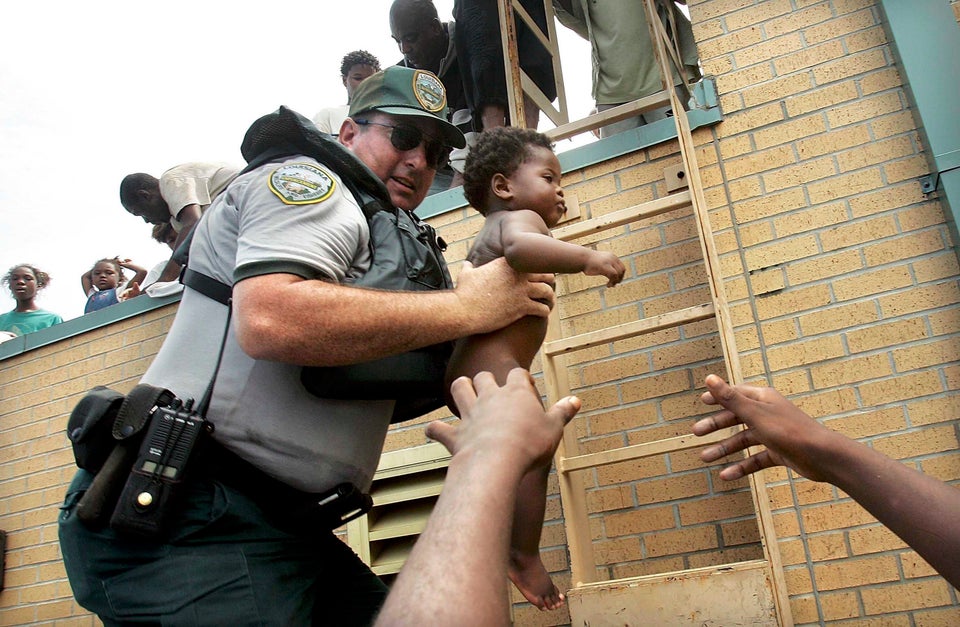
Mark Benton, of the Louisiana Department of Wildlife and Fisheries, helps to rescue 3-month-old Ishmael Sullivan from a school rooftop after he and his mother were trapped with dozens of others in high water from Hurricane Katrina, Aug. 30, 2005, in New Orleans.
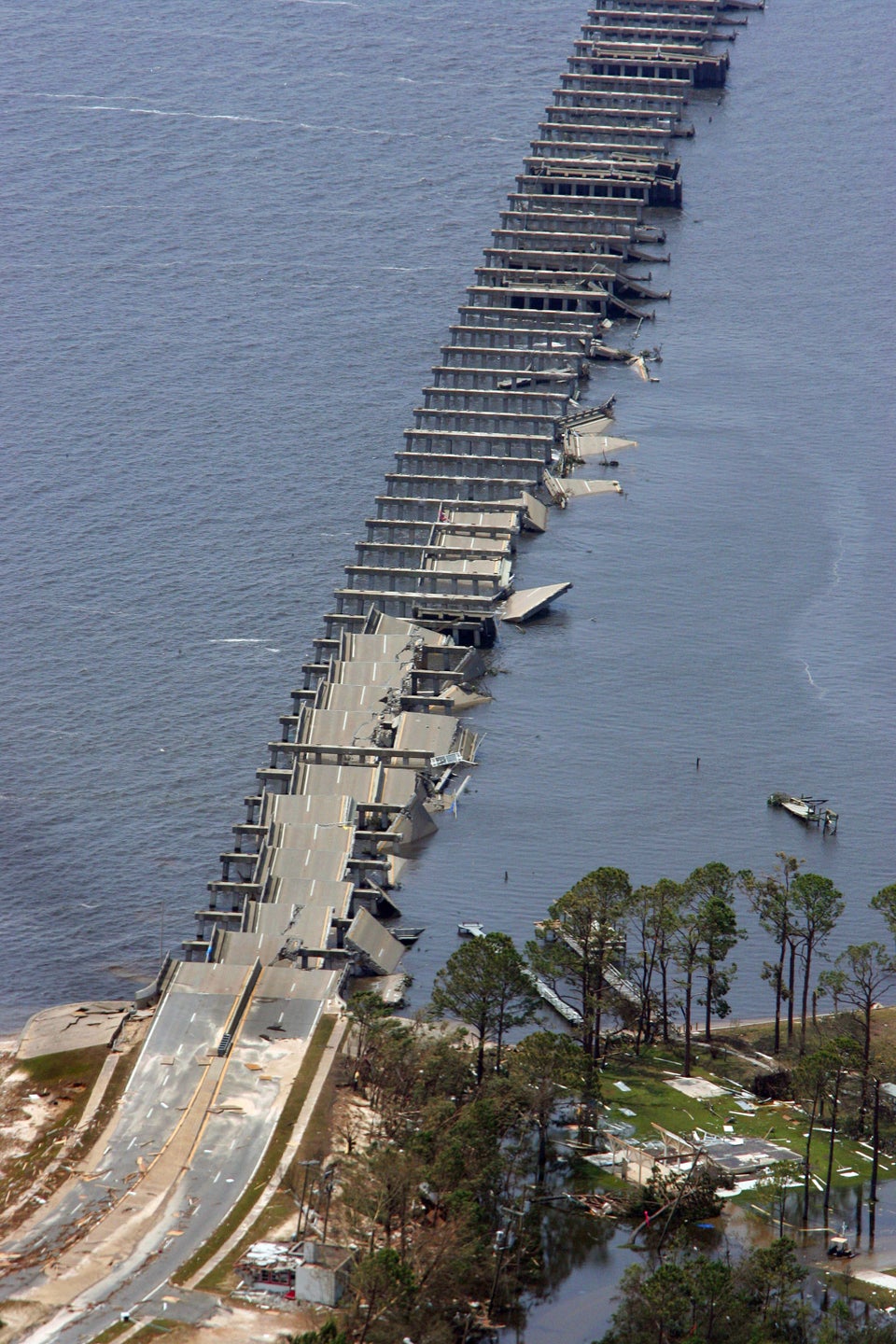
The Interstate 90 bridge over St. Louis Bay in Pass Christian, Mississippi, is folded and destroyed from the high wind and waves of Hurricane Katrina, Aug. 30, 2005.
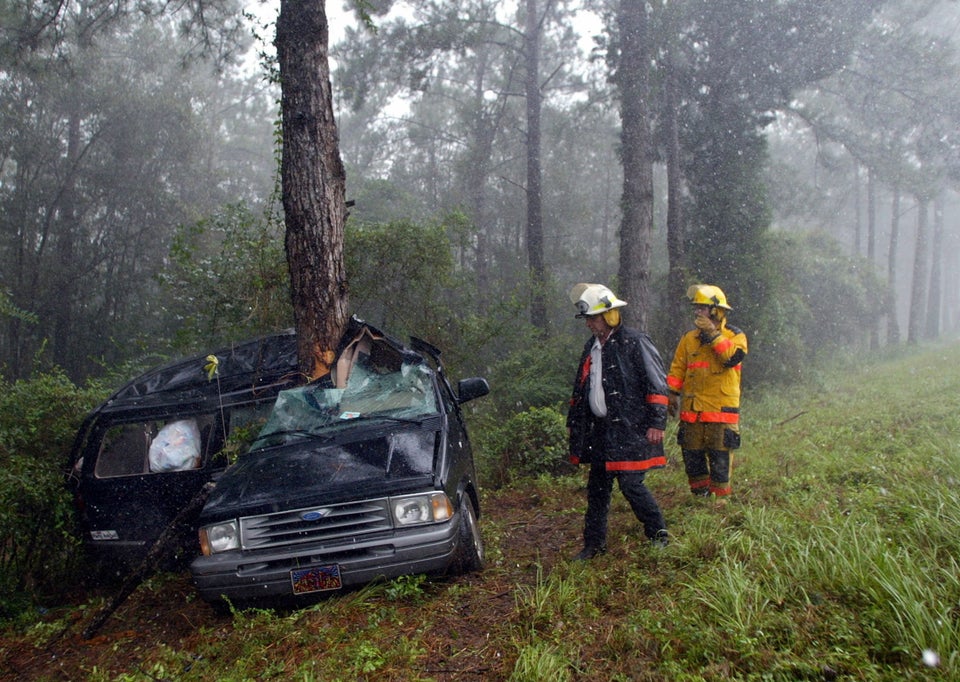
Fire rescue officials talk as they check on the body of a man killed in a car accident when he lost control of his vehicle as Hurricane Katrina struck on the I-10 highway outside of Pensacola, Florida, Aug. 29, 2005.
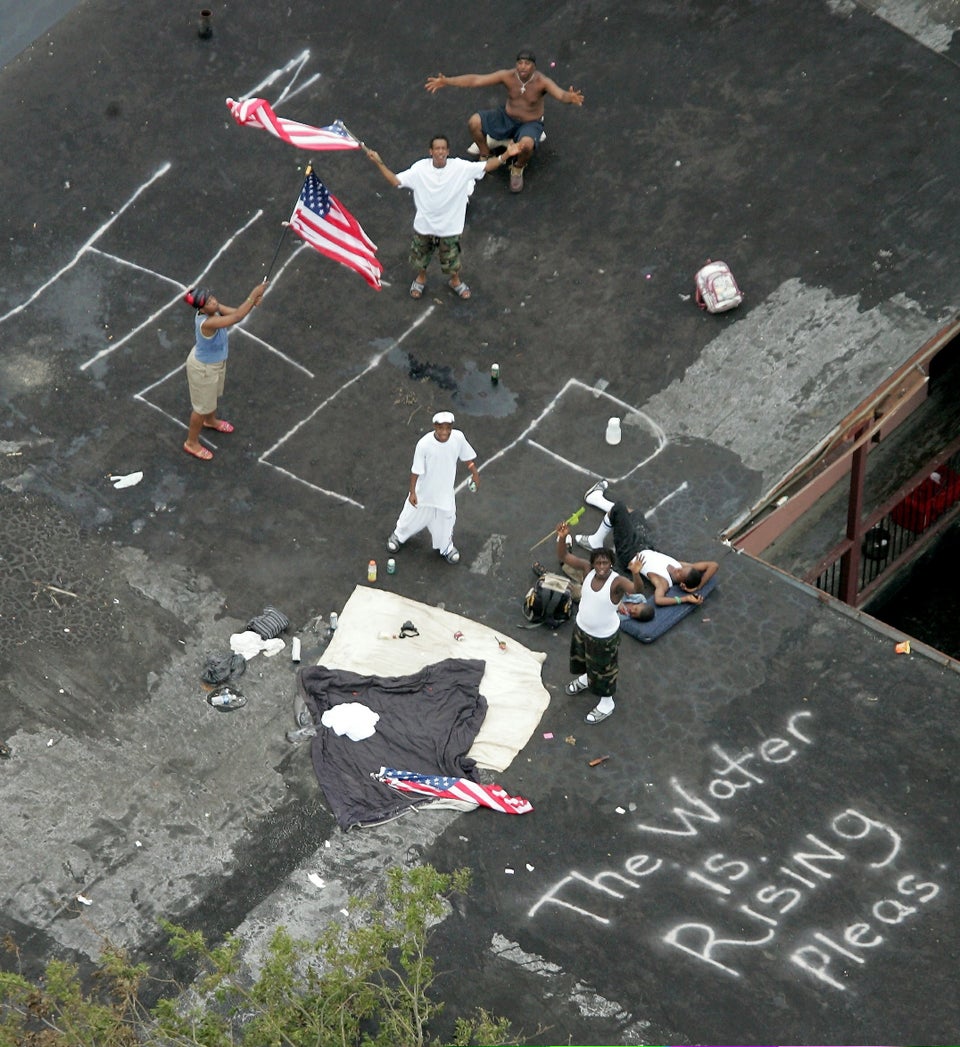
Residents wait to be rescued from the floodwaters of Hurricane Katrina in New Orleans, Sept. 1, 2005.
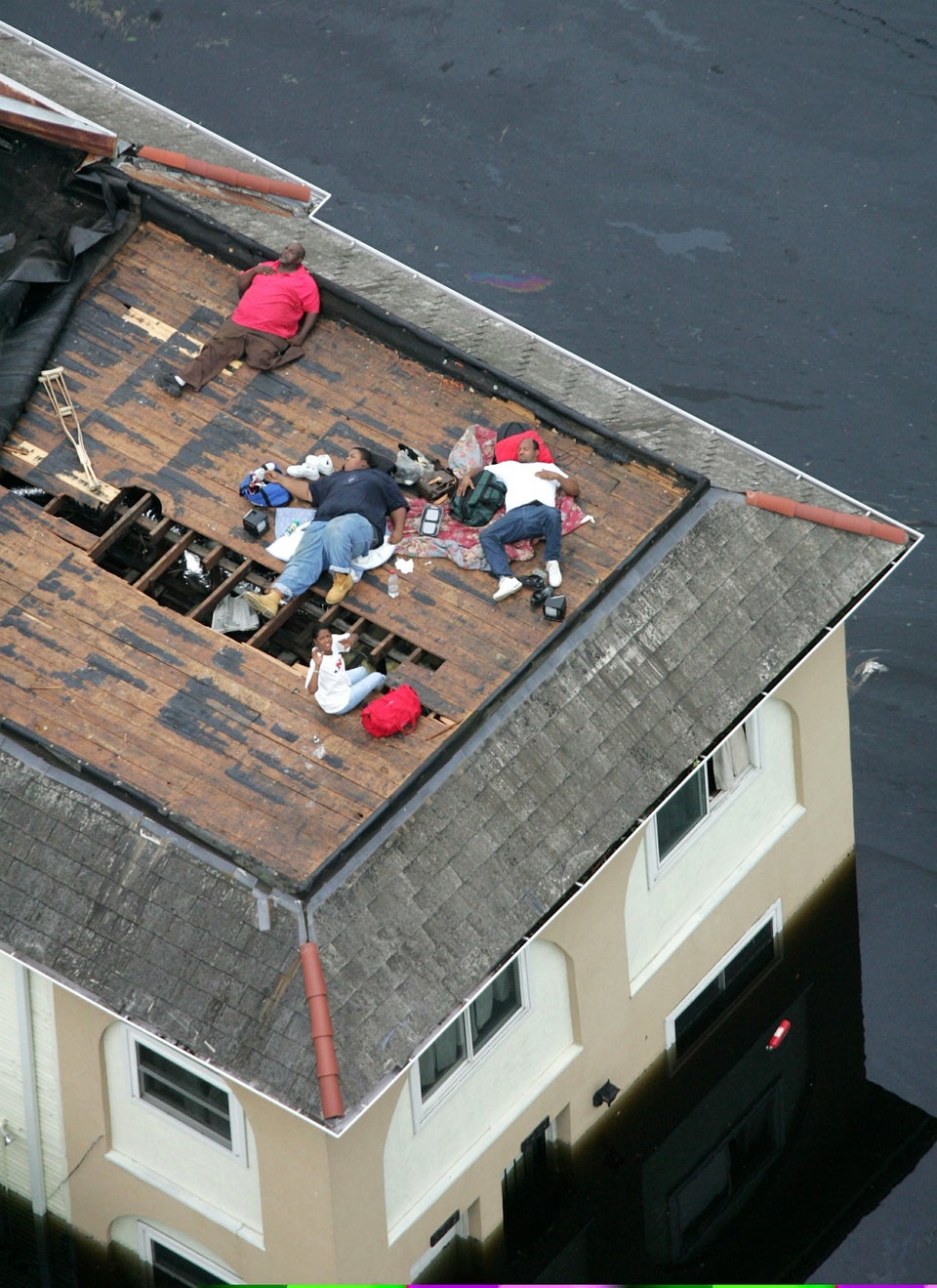
Residents wait on a rooftop to be rescued from the floodwaters of Hurricane Katrina in New Orleans, Sept. 1, 2005.
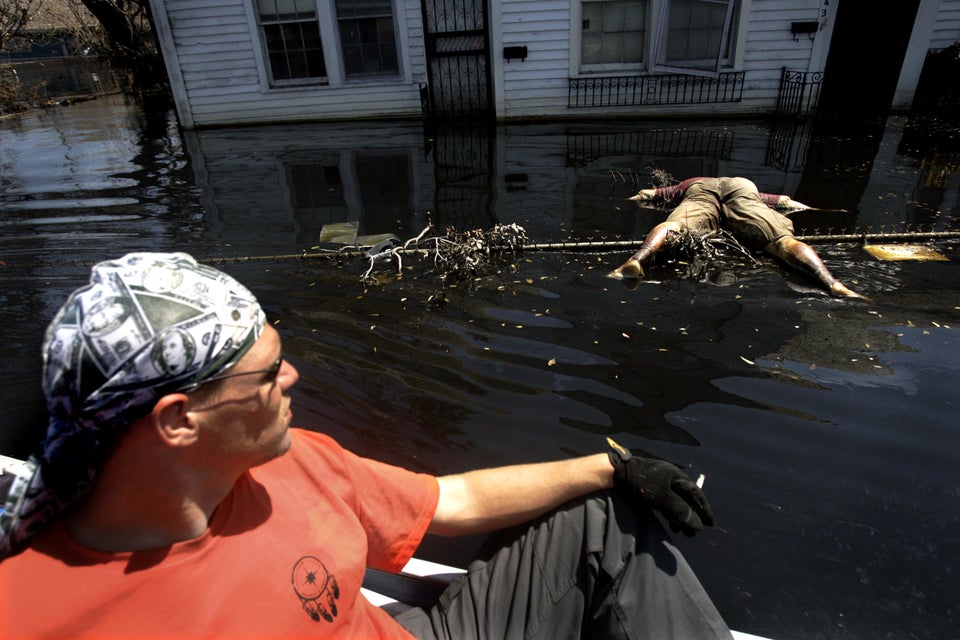
Chickasaw Nation search and rescuer Casey Kelley, of Ada, Oklahoma, can only watch as his rescue boat makes its way past a home with a dead body floating in the front yard in New Orleans, Sept. 7, 2005. At this stage in the search and rescue operations, few dead bodies were being recovered because all efforts were going toward finding the living.
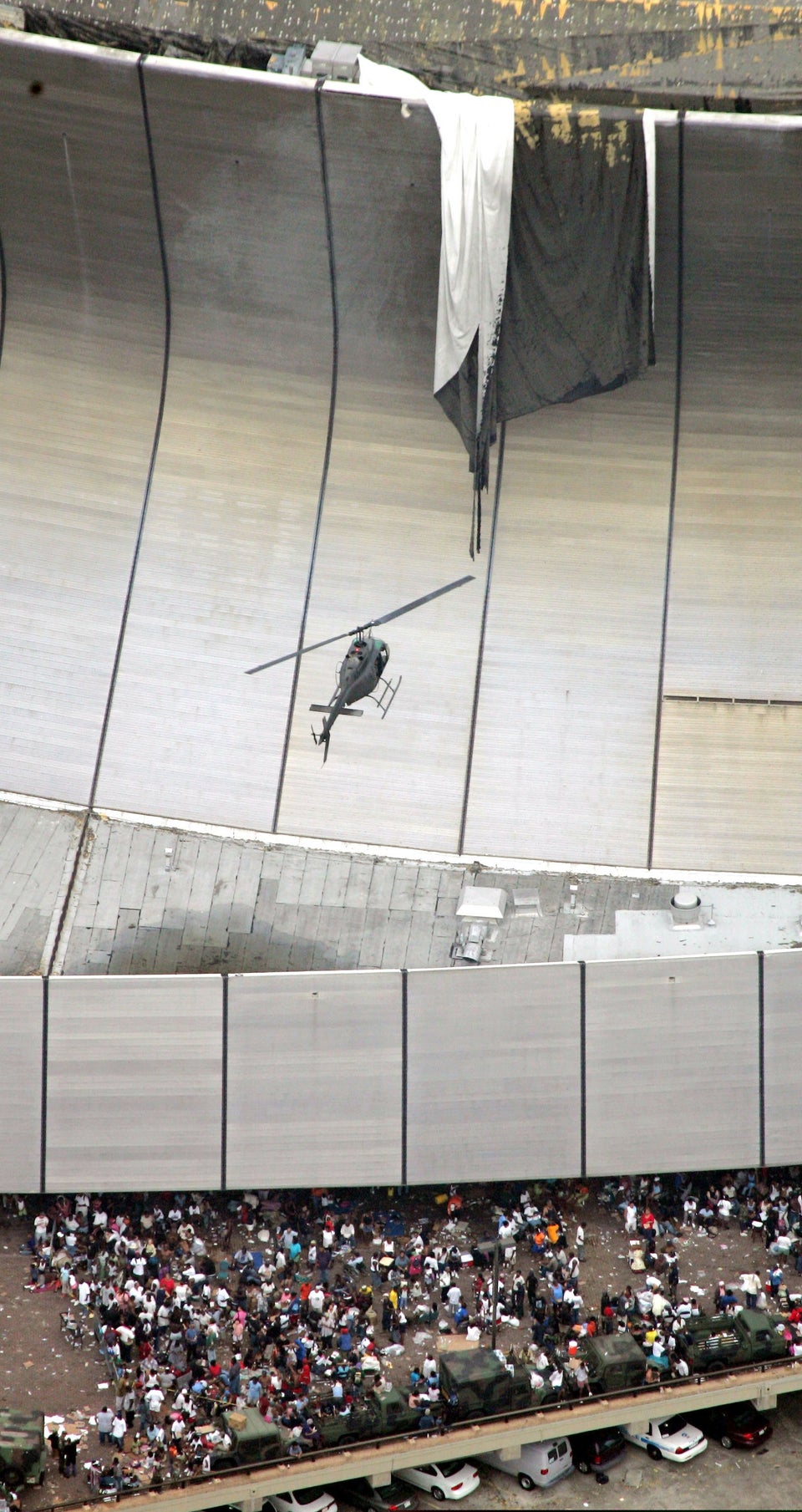
A helicopter flies over residents waiting to be evacuated from the Louisiana Superdome in New Orleans, Sept. 1, 2005.
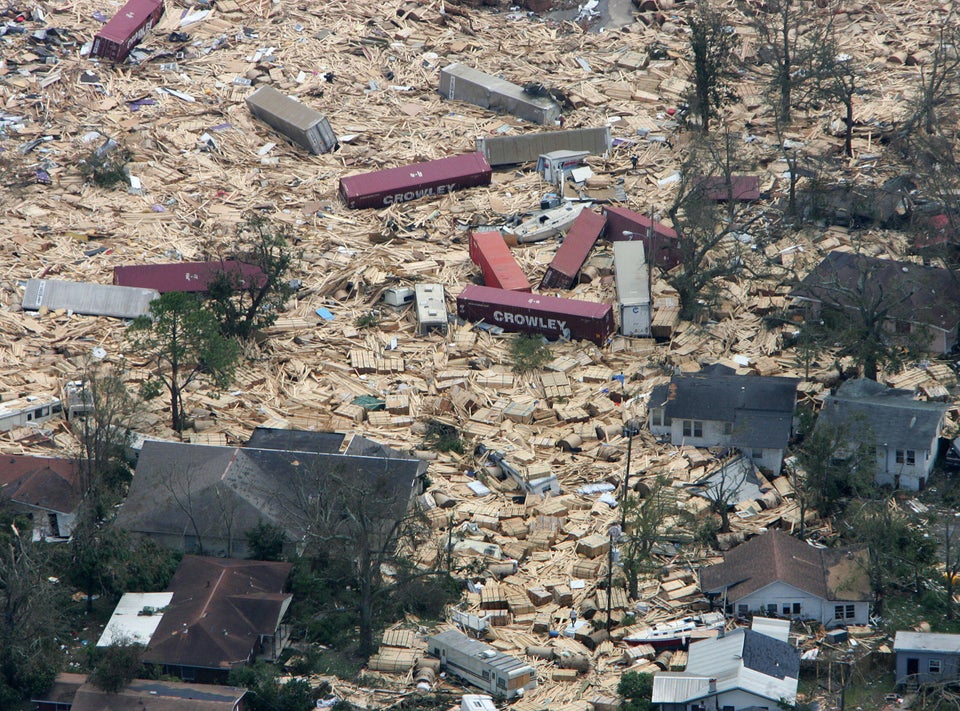
A residential area in Gulfport, Mississippi, is seen inundated with shipping containers, RVs and boats, all washed ashore by Hurricane Katrina, on Aug. 30, 2005.
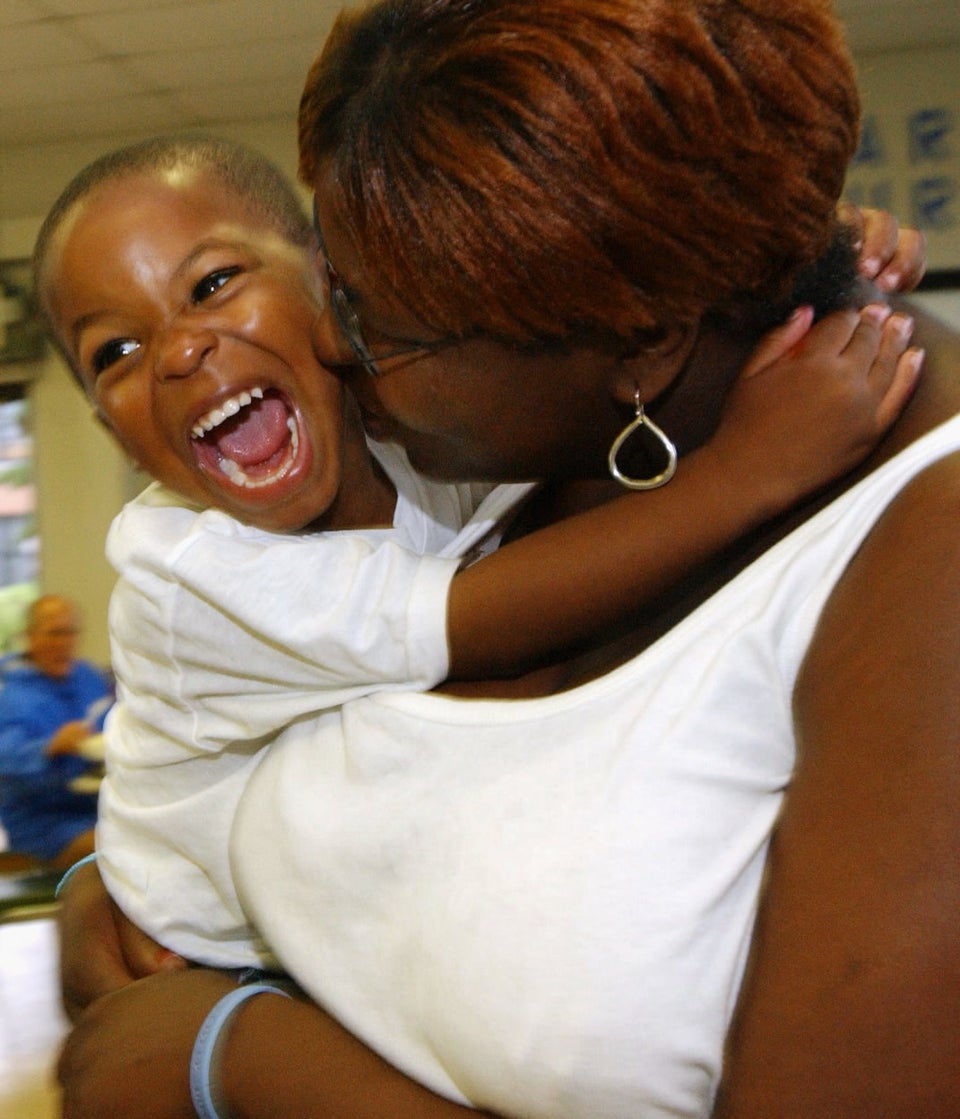
Separated by the aftermath of Hurricane Katrina, Constance Essex (right) is reunited with her son, William Essex, and her father, Charles Essex, at Camp Edwards in Cape Cod, Massachusetts, on Sept. 16, 2005. Constance maintained her post as a prison guard in Louisiana and evacuated the area with prisoners while her family was forced out of their New Orleans home when the levees broke.
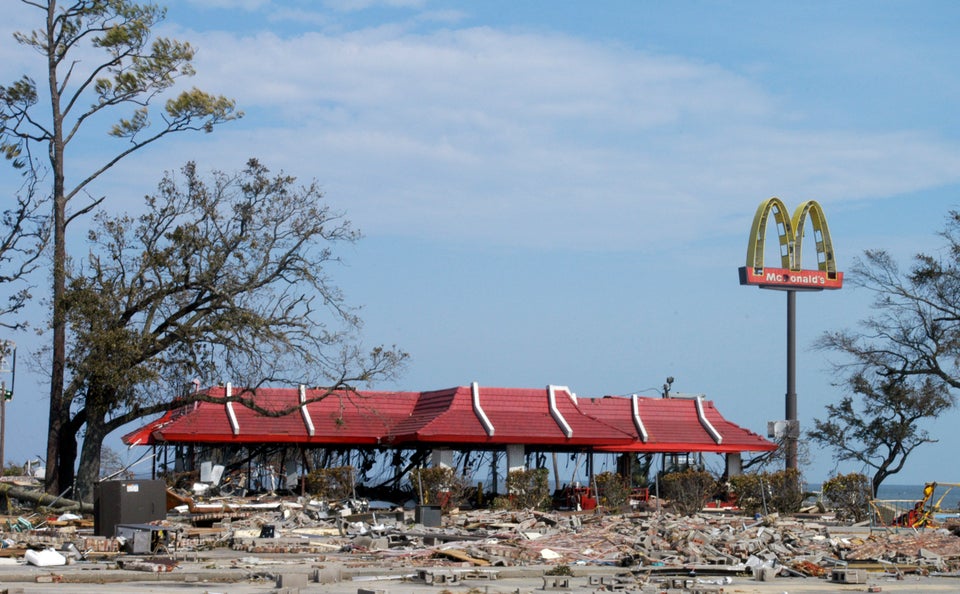
A McDonald's lies in ruins across from the beach and Highway 90 on Aug. 30, 2005, in Biloxi, Mississippi.
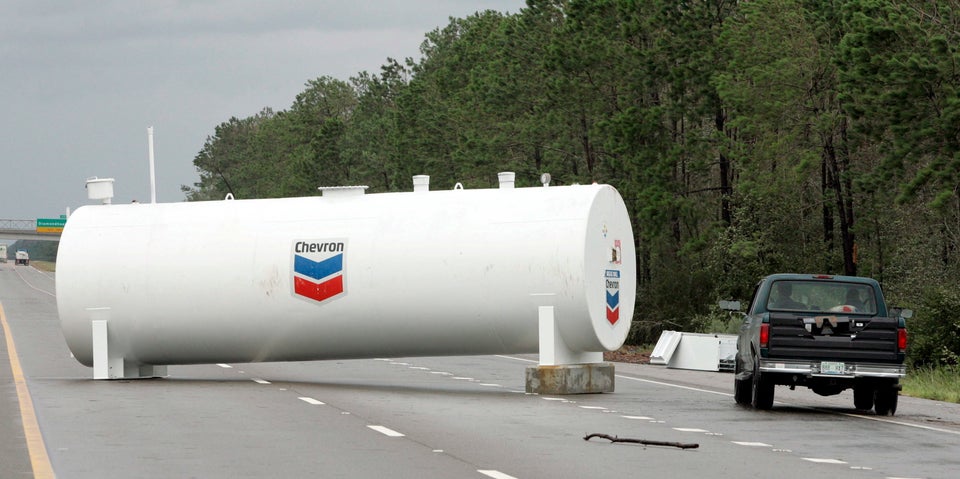
A truck maneuvers around a large fuel tank, carried by floodwaters onto Interstate 10 near Gulfport, Mississippi, on Aug. 29, 2005.
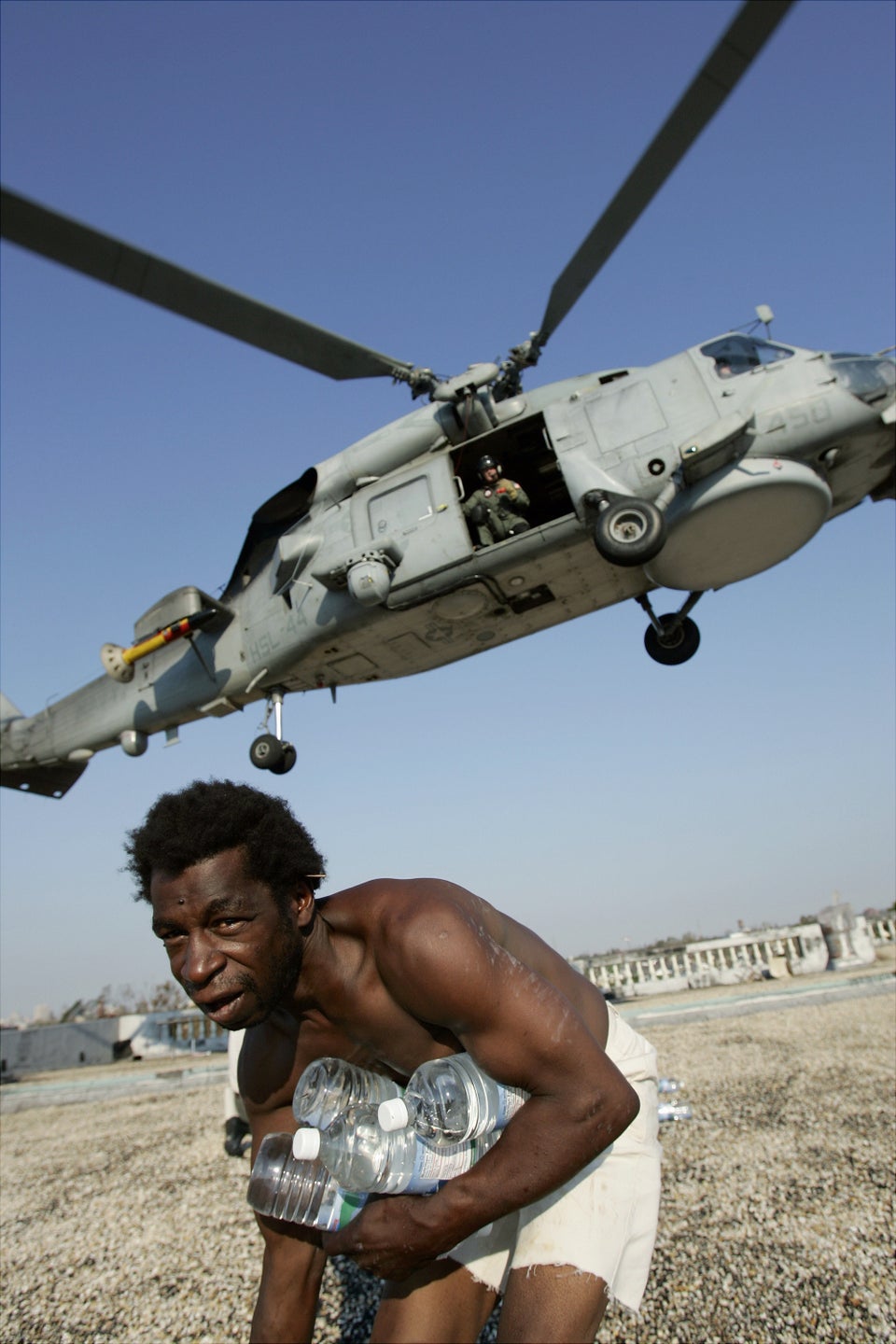
A Navy helicopter drops boxes of food and bottled water onto the roof of a public school for a man in New Orleans' flooded 9th Ward on Sept. 5, 2005.
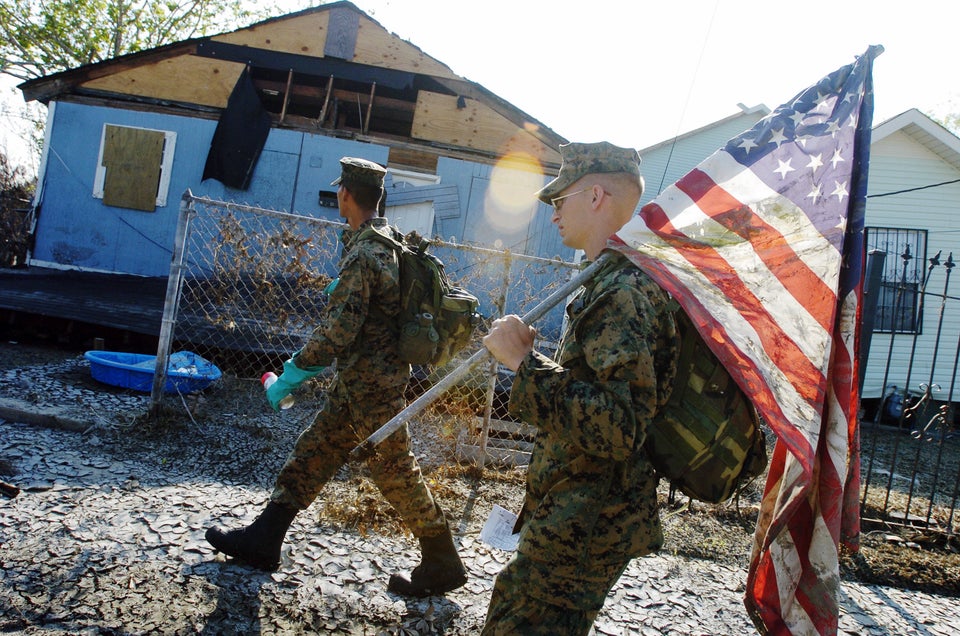
Cpl. Karl Krebsbach carries a tattered and muddied American flag he found as he and other Marines from Camp Lejeune, North Carolina, patrol the Lower 9th Ward neighborhood for a second time to search for signs of life in the aftermath of Hurricane Katrina on Sept. 23, 2005.
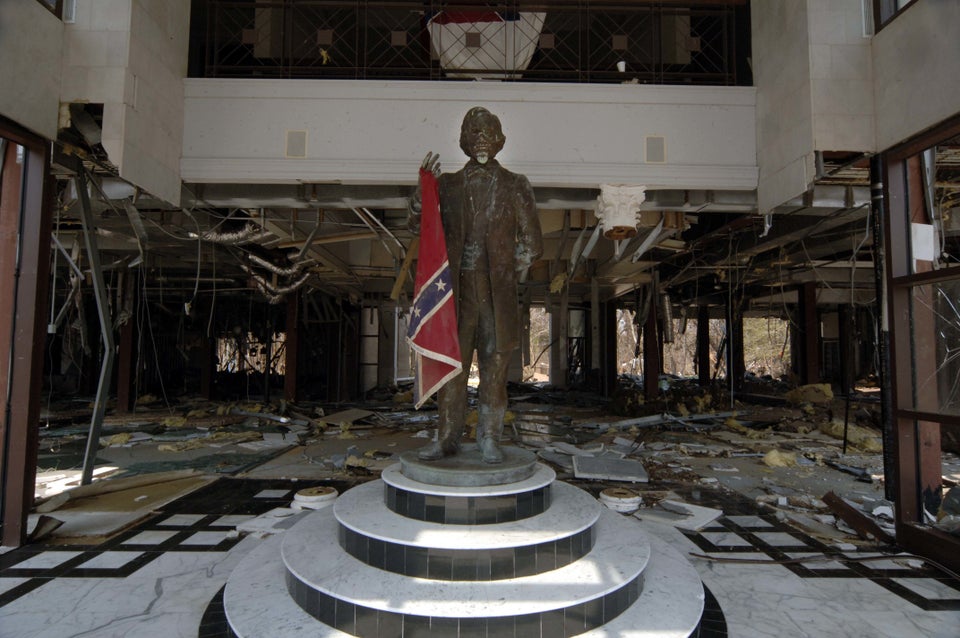
A statue of Jefferson Davis is seen with a Confederate flag that came to rest in the statue's hand, having been blown there by the winds of Katrina, Sept. 12, 2005 in Biloxi, Mississippi.

A coffin displaced by the floodwaters following Hurricane Katrina sits on the side of Highway 23 on Sept. 7, 2005.
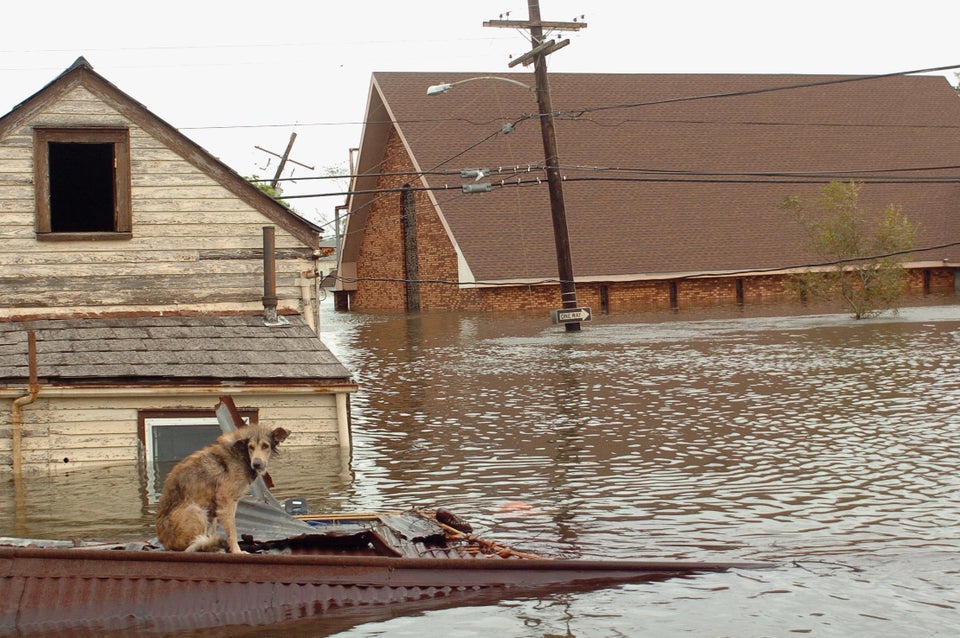
A dog sits stranded on a rooftop in the flooded Lower 9th Ward neighborhood in New Orleans on Aug. 29, 2005.
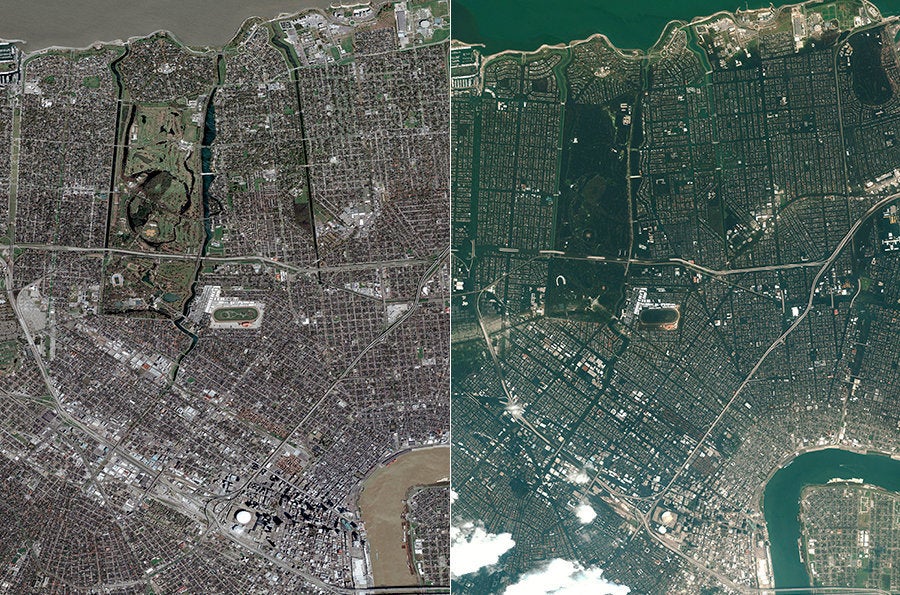
LEFT: A satellite view of New Orleans before Hurricane Katrina, on March 9, 2005.
RIGHT: A view of flooded New Orleans in the aftermath of Hurricane Katrina, on Aug. 31, 2005.
